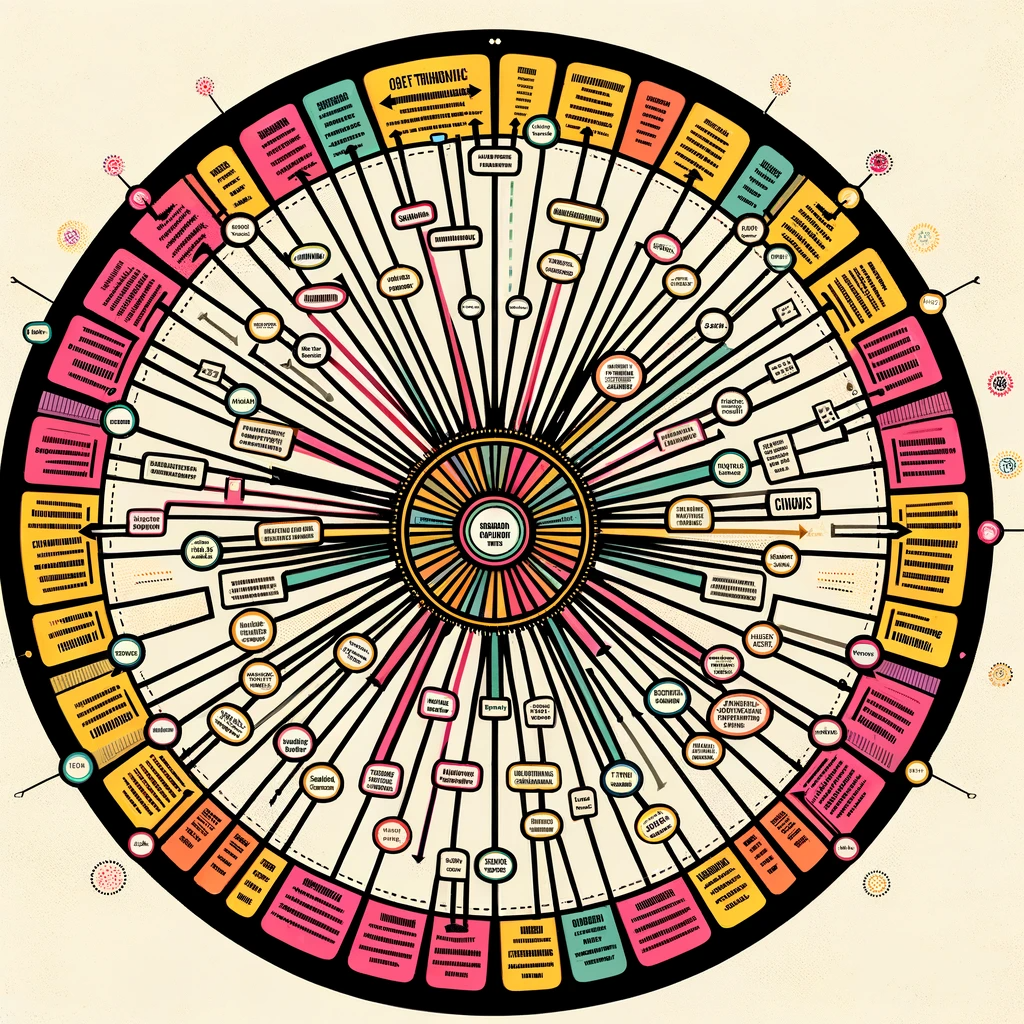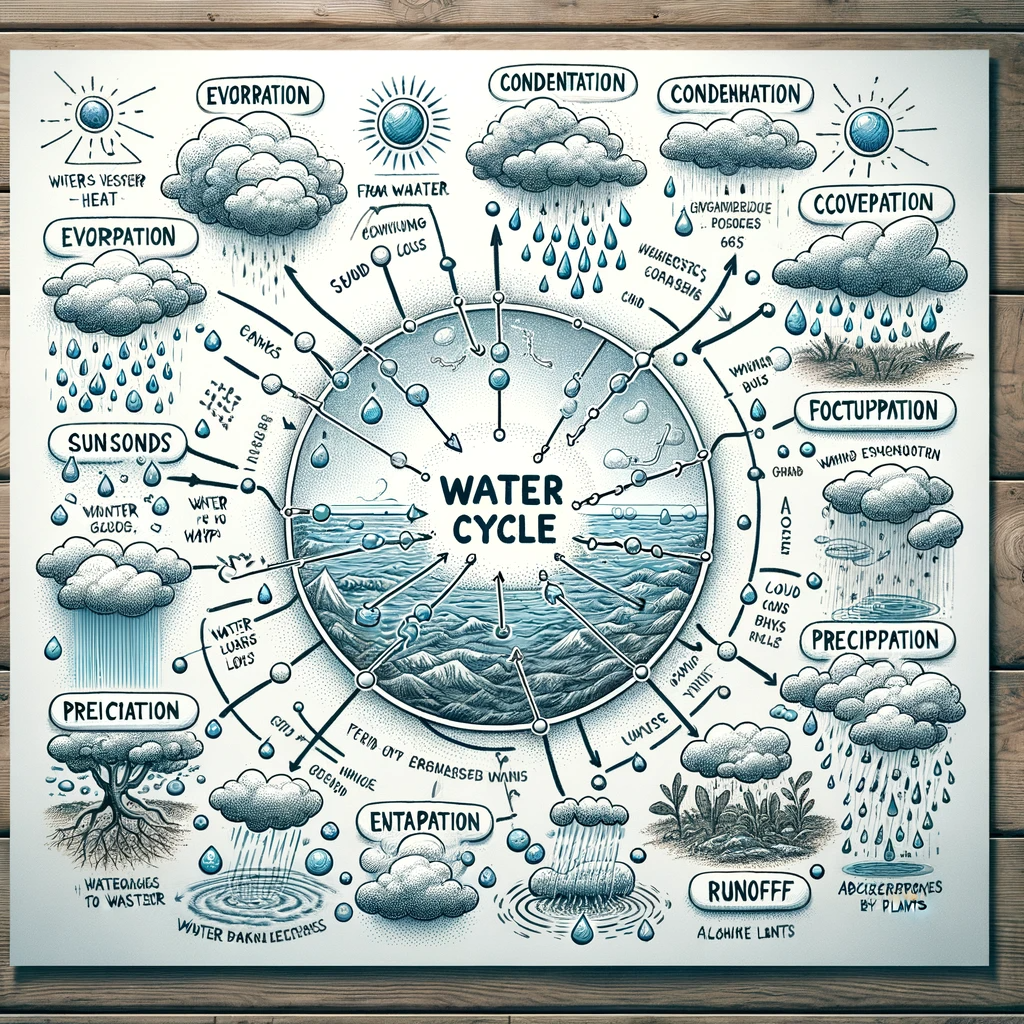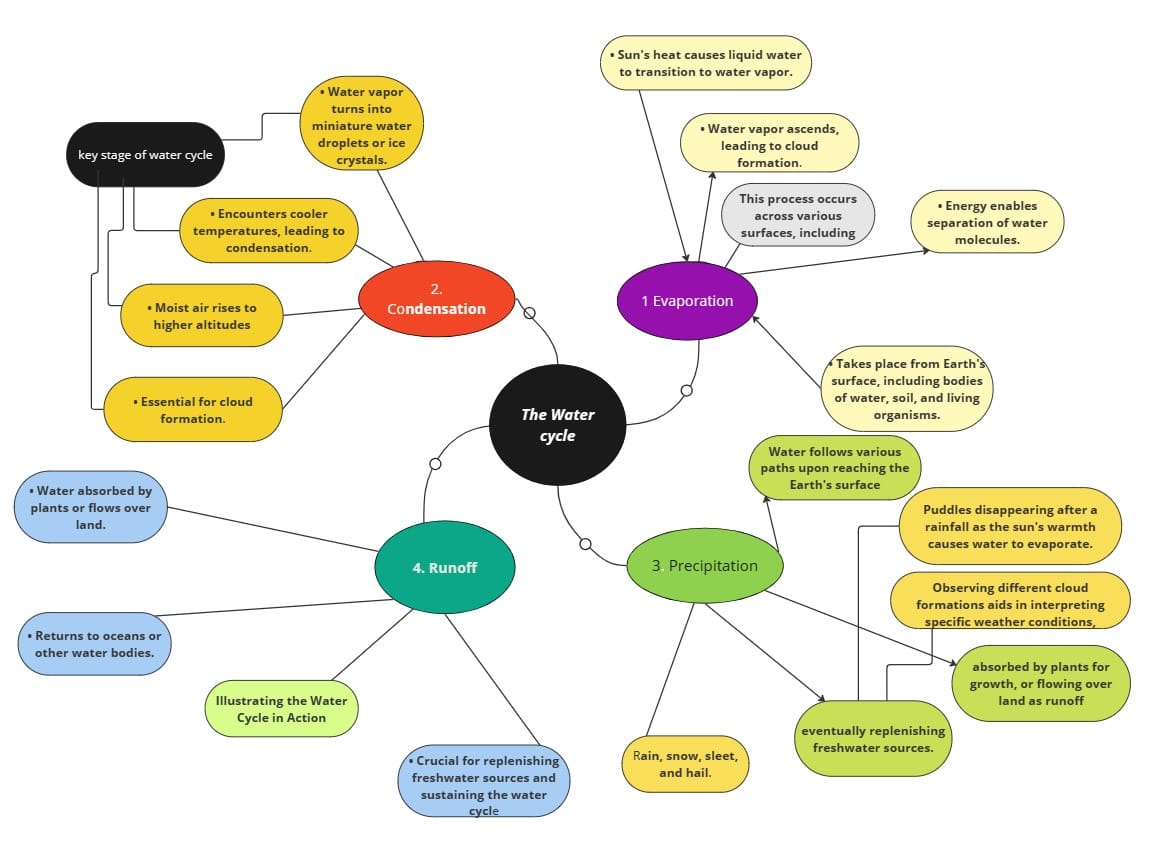Effective Note-Taking with Spider Diagrams
Introduction:
Note-taking is a crucial skill that enhances understanding, retention, and organization of information. One popular method is using spider diagrams, also known as mindmaps, which provide a visual representation of ideas and connections. In this lesson, we'll explore the benefits of spider diagrams and how they can be a powerful tool for effective note-taking.
1. Understanding Spider Diagrams:
- Definition: Spider diagrams are visual representations of information, often organized around a central concept.
- Structure: They are organized on one page, resembling a spider's web with branches connecting to a central idea.
- Alternative Name: Sometimes referred to as mindmaps, emphasizing their ability to visually connect ideas.
2. Advantages of Spider Diagrams:
- Compact and Focused: Spider diagrams keep all your notes on a single page, preventing unnecessary rambling and ensuring focus.
- Quick Overview: They allow you to grasp the main points at a glance, providing a quick overview of the topic.
- Structural Aid: Ideal for structuring essays or presentations as they naturally group related points together.
- Identifying Gaps: Clear visualization helps identify gaps in your understanding, prompting further research.
3. Spidergram Representation (Figure 3.5.1):
- Visual Example: Figure 3.5.1 illustrates a spidergram representing notes taken, showcasing how this method can be applied.
- Central Concept: The central idea is surrounded by interconnected branches, each representing a key point or subtopic.
4. Application Tips:
- Color Coding: Use different colors for branches to enhance clarity and highlight key themes.
- Hierarchy: Vary the size of branches to reflect the importance or hierarchy of information.
- Keywords: Focus on keywords or short phrases to keep the diagram concise.
5. Addressing Dislikes:
- Acknowledging Preferences: While some individuals may not prefer this style of note-taking, it's essential to recognize personal preferences.
- Experimentation: Encourage students to experiment with various note-taking methods to find what works best for them.
Conclusion:
In conclusion, spider diagrams are a versatile and effective tool for note-taking. Their visual nature aids in understanding and organization, making them particularly useful for students, professionals, and anyone seeking a structured approach to information. Experimenting with different note-taking styles, including spider diagrams, can lead to improved comprehension and more organized study materials.
Activity
Instructions:
1. First READ the text carefully.
2. Then CREATE A DIAGRAM to take notes based on the information presented in the text.
3. Submit your diagram
TEXT:
Title: “The Water Cycle
The hydrological cycle, also known as the water cycle, is an ongoing process by which water circulates on Earth. It is a crucial mechanism that redistributes water among various reservoirs, including oceans, lakes, rivers, and the atmosphere. The water cycle encompasses several key stages, namely evaporation, condensation, precipitation, and runoff, which collectively ensure the equilibrium of water on our planet.
Evaporation is the initial phase of the water cycle, occurring when the sun's heat causes water to transition from a liquid state to a water vapour state. This energy from the sun enables the separation of water molecules, allowing them to escape into the atmosphere. Evaporation predominantly takes place from the Earth's surface, encompassing bodies of water, soil, and even living organisms. Consequently, the water vapour ascends into the atmosphere, leading to cloud formation and advancing the next stage of the water cycle.
Condensation constitutes the second phase, whereby the moist air-carrying water vapour rises to higher altitudes and encounters cooler temperatures. This cooling effect prompts the condensation of water vapour into miniature water droplets or ice crystals, culminating in cloud formation. The process of condensation is vital for the creation of clouds, which then play a significant role in precipitation. Observing different cloud formations allows us to interpret specific weather conditions. During condensation, clouds grow and eventually generate rain, snow, or other forms of precipitation, signifying the next step in the water cycle.
The final stage of the water cycle is precipitation, which denotes any form of water that descends from the atmosphere to the Earth's surface. This encompasses rain, snow, sleet, and hail. Precipitation transpires when clouds become saturated with water droplets or ice crystals, reaching a point where they can no longer retain them. The type and size of precipitation are influenced by diverse factors such as temperature, humidity, and atmospheric pressure. Upon reaching the Earth, precipitation follows varying paths. Some water is absorbed by plants and utilized for growth, while other water flows over land as runoff, ultimately returning to oceans or other water bodies. This runoff is pivotal in replenishing freshwater sources and sustaining the water cycle.
The water cycle is an incessant process that ensures the distribution and availability of water on Earth. Water continuously migrates between the Earth's surface and the atmosphere through evaporation, condensation, precipitation, and runoff. This cycle significantly contributes to regulating weather patterns, supporting ecosystems, and upholding the equilibrium of our planet's water resources. Comprehending the water cycle is vital for addressing water scarcity, managing water supplies, and safeguarding our environment. Understanding and promoting sustainable water management practices are crucial in ensuring water resources' long-term availability and quality for both human and ecological needs. By studying the water cycle and its intricate processes, we can develop strategies to conserve and protect this precious resource, mitigating the impacts of water scarcity and promoting a more sustainable future for our planet”.
Based on the context
1. Title: The Water Cycle
· Also known as the hydrological cycle.
· Ongoing process redistributing water on Earth.
2. Key Stages of the Water Cycle:
· Evaporation
· Condensation
· Precipitation
· Runoff
3. Evaporation:
· Sun's heat causes liquid water to transition to water vapor.
· Energy enables separation of water molecules.
· Takes place from Earth's surface, including bodies of water, soil, and living organisms.
· Water vapor ascends, leading to cloud formation.
4. Condensation:
· Moist air rises to higher altitudes.
· Encounters cooler temperatures, leading to condensation.
· Water vapor turns into miniature water droplets or ice crystals.
· Essential for cloud formation.
5. Clouds and Precipitation:
· Clouds formed during condensation play a significant role in precipitation.
· Different cloud formations indicate specific weather conditions.
· Precipitation includes rain, snow, sleet, and hail.
6. Runoff:
· Water absorbed by plants or flows over land.
· Returns to oceans or other water bodies.
· Crucial for replenishing freshwater sources and sustaining the water cycle.
7. Significance of the Water Cycle:
· Incessant process ensuring water distribution and availability.
· Regulates weather patterns, supports ecosystems, and upholds water resource equilibrium.
8. Water Management:
· Comprehending the water cycle is vital for addressing water scarcity.
· Sustainable water management practices are crucial for long-term availability and quality.
· Study of the water cycle helps develop strategies for conservation and protection.
9. Conclusion:
· Understanding the water cycle is essential for a sustainable future.
· Mitigating impacts of water scarcity and promoting conservation are key goals.
Context 02
Title: The Water Cycle: A Comprehensive Exploration
Topic: The Water Cycle The water cycle, scientifically known as the hydrological cycle, represents a continual process vital for the circulation and redistribution of water on Earth. This natural mechanism plays a pivotal role in maintaining the balance of water among diverse reservoirs, including oceans, lakes, rivers, and the atmosphere.

Theme: Sustaining Life through Equilibrium The overarching theme of the water cycle revolves around sustaining life on our planet. It ensures the equilibrium of water resources by constantly moving water between the Earth's surface and the atmosphere. This perpetual process regulates weather patterns, supports ecosystems, and contributes to the availability of water for various purposes.
Theory: Key Stages of the Water Cycle The water cycle comprises four key stages, each with distinct processes:
1. Evaporation: Initiated by the sun's heat, causing the transition of liquid water to water vapor. This process occurs across various surfaces, including bodies of water, soil, and living organisms.
2. Condensation: Moist air rises to higher altitudes, encountering cooler temperatures. This leads to the condensation of water vapor into microscopic droplets or ice crystals, ultimately forming clouds.
3. Precipitation: The culmination of the water cycle, involving any form of water descending from the atmosphere to the Earth's surface. This includes rain, snow, sleet, and hail.
4. Runoff: Water follows various paths upon reaching the Earth's surface—absorbed by plants for growth, or flowing over land as runoff, eventually replenishing freshwater sources.
Examples: Illustrating the Water Cycle in Action Understanding the water cycle becomes tangible through real-world examples:
· Evaporation in Action: Puddles disappearing after a rainfall as the sun's warmth causes water to evaporate.
· Cloud Formation and Weather Interpretation: Observing different cloud formations aids in interpreting specific weather conditions, showcasing the importance of condensation.
· Rainfall Impact: Recognizing how precipitation, whether as rain, snow, or hail, impacts the environment and contributes to sustaining life.
In summary, the water cycle is a fascinating topic that delves into the intricacies of Earth's water circulation. The theme of equilibrium and the key stages, supported by real-life examples, enhance our comprehension of this essential natural process

Check full list of websites to help you create your spiderdiagramm note
Creating spider diagrams, also known as mind maps or concept maps, can be done using various online tools. Here are some websites that you can use to create spider diagram notes:
- MindMeister: MindMeister is a popular online mind mapping tool that allows you to create, share, and collaborate on mind maps. It's user-friendly and offers a variety of features.Website: MindMeister
- Biggerplate: Biggerplate is a community-driven mind map library and platform that also provides a web-based mind mapping tool. You can create and share mind maps online.Website: Biggerplate
- XMind: XMind is a powerful and easy-to-use mind mapping tool. While there is a desktop version, they also offer an online version that allows you to create mind maps directly in your web browser.Website: XMind
- Coggle: Coggle is a simple and intuitive online tool for creating mind maps and flowcharts. It's collaborative, so you can work on mind maps with others in real-time.Website: Coggle
- Lucidchart: Lucidchart is a versatile diagramming tool that allows you to create various types of diagrams, including mind maps. It offers a clean and easy-to-use interface.Website: Lucidchart
- Draw.io: While not specifically designed for mind maps, Draw.io is a versatile diagramming tool that can be used to create mind maps. It's free and works directly in your web browser. Website: Draw.io
- Mindomo: Mindomo is an online mind mapping and concept mapping tool that provides a visually appealing interface for creating and organizing your ideas. Website: Mindomoideas. A website
full picture of diagram note-taking
Full diagram tutorial
check :https://miro.com/


we can conclude the picture below

Download the final version of the document :
Visit our Q&A :https://forum.ingoumoodle.com/






